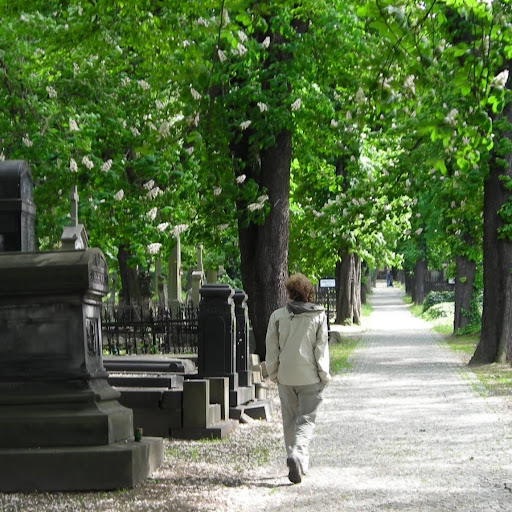Michael Robert Cutter
age ~71
from Ione, CA
- Also known as:
-
- Michael R Cutter
- Michael Norma Cutter
- Michael Te Cutter
- Mike R Cutter
- Micheal R Cutter
Michael Cutter Phones & Addresses
- Ione, CA
- 21421 Dove Ct, Pine Grove, CA 95665 • 2092231348
- Jackson, CA
- Danville, CA
- 427 School St, Fremont, CA 94536 • 5107976834
- 3839 Jamestown Rd, Fremont, CA 94538 • 5107976834
- 38763 Stonington Ter, Fremont, CA 94536 • 5107976834
- Menlo Park, CA
Isbn (Books And Publications)


How to Write Policies and Procedures: Facilitator's Manual
view sourceAuthor
Michael Cutter
ISBN #
0935184910


How to Apply Quality Assurance Principles: Facilitator's Manual
view sourceAuthor
Michael Cutter
ISBN #
0935184937


How to Prepare for an Fda Inspection: Facilitator's Manual
view sourceAuthor
Michael Cutter
ISBN #
0935184953


Us Patents
-
Portable Integrated Indoor And Outdoor Positioning System And Method
view source -
US Patent:6459989, Oct 1, 2002
-
Filed:Mar 3, 2000
-
Appl. No.:09/517897
-
Inventors:Michael Kirkpatrick - Hayward CA
Jeffrey Casper - Mountain View CA
Clay Ross - Mountain View CA
D. Scott Seaton - Fremont CA
Christian Gellrich - Redwood City CA
Michael Cutter - Fremont CA
James Binnion - Oakland CA -
Assignee:SRI International - Menlo Park CA
-
International Classification:G01C 200
-
US Classification:701215, 701213, 701214, 701207, 340988, 340426, 342457, 342450, 342 45, 34235706, 34235709, 34235717, 455 62, 455452, 455465, 455509, 370431, 370329, 370316, 370320
-
Abstract:An integrated indoor and outdoor positioning system and method. A first communication unit aperiodically emits an ultrasonic signal. A second communication unit receives the ultrasonic signal and transmits an identification signal in response to receiving the ultrasonic signal. One of the two communication units is placed at a predetermined position and the other of the two communication units is placed with an object. Identification information obtained from the identification signal is used to determine position information indicating that the object is at the predetermined position. The first communication unit is placed at the predetermined position and the second communication unit accompanies the object. Alternatively, the first communication unit accompanies the object and the second communication unit is placed at the predetermined position. One of the two communication units may also include a GPS receiver for receiving GPS signals from a plurality of satellites or pseudolites and computing position information therefrom.
-
Object Preview In A Mixed Reality Environment
view source -
US Patent:20190251753, Aug 15, 2019
-
Filed:Apr 29, 2019
-
Appl. No.:16/397673
-
Inventors:- Palo Alto CA, US
Rupa Chaturvedi - Menlo Park CA, US
Jared Corso - San Mateo CA, US
Michael Patrick Cutter - Mountain View CA, US
Sean Niu - San Francisco CA, US
Shaun Michael Post - San Mateo CA, US
Peiqi Tang - Santa Clara CA, US
Stefan Vant - Seattle WA, US
Mark Scott Waldo - Richmond CA, US
Andrea Zehr - Palo Alto CA, US -
International Classification:G06T 19/00
G06T 11/60 -
Abstract:Users can view images or renderings of items placed (virtually) within a physical space. For example, a rendering of an item can be placed within a live camera view of the physical space. A snapshot of the physical space can be captured and the snapshot can be customized, shared, etc. The renderings can be represented as two-dimensional images, e.g., virtual stickers or three-dimensional models of the items. Users can have the ability to view different renderings, move those items around, and develop views of the physical space that may be desirable. The renderings can link to products offered through an electronic marketplace and those products can be consumed. Further, collaborative design is enabled through modeling the physical space and enabling users to view and move around the renderings in a virtual view of the physical space.
-
Markerless Image Analysis For Augmented Reality
view source -
US Patent:20190236846, Aug 1, 2019
-
Filed:Apr 15, 2019
-
Appl. No.:16/384059
-
Inventors:- Palo Alto CA, US
Michael Patrick Cutter - Mountain View CA, US
Yu Lou - Mountain View CA, US
Sean Niu - San Francisco CA, US
Shaun Michael Post - San Mateo CA, US
Colin Jon Taylor - Orinda CA, US
Mark Scott Waldo - Richmond CA, US -
International Classification:G06T 19/00
G06Q 30/06
G06K 9/00 -
Abstract:Systems and methods for a markerless approach to displaying an image of a virtual object in an environment are described. A computing device is used to capture an image of a real-world environment; for example including a feature-rich planar surface. One or more virtual objects which do not exist in the real-world environment are displayed in the image, such as by being positioned in a manner that they appear to be resting on the planar surface, based at least on a sensor bias value and scale information obtained by capturing multiple image views of the real-world environment.
-
Markerless Image Analysis For Augmented Reality
view source -
US Patent:20180330544, Nov 15, 2018
-
Filed:May 9, 2017
-
Appl. No.:15/590889
-
Inventors:- Palo Alto CA, US
Michael Patrick Cutter - Mountain View CA, US
Yu Lou - Mountain View CA, US
Sean Niu - San Francisco CA, US
Shaun Michael Post - San Mateo CA, US
Colin Jon Taylor - Orinda CA, US
Mark Scott Waldo - Richmond CA, US -
International Classification:G06T 19/00
G06K 9/00
G06Q 30/06 -
Abstract:Systems and methods for a markerless approach to displaying an image of a virtual object in an environment are described. A computing device is used to capture an image of a real-world environment; for example including a feature-rich planar surface. One or more virtual objects which do not exist in the real-world environment are displayed in the image, such as by being positioned in a manner that they appear to be resting on the planar surface, based at least on a sensor bias value and scale information obtained by capturing multiple image views of the real-world environment.
-
Region Selection For Image Match
view source -
US Patent:20180012102, Jan 11, 2018
-
Filed:Sep 21, 2017
-
Appl. No.:15/711580
-
Inventors:- Palo Alto CA, US
Arnab Sanat Kumar Dhua - Mountain View CA, US
Michael Patrick Cutter - Santa Cruz CA, US -
International Classification:G06K 9/46
G06K 9/00
G06K 9/62 -
Abstract:The accuracy of an image matching process can be improved by determining relevant swatch regions of the images, where those regions contain representative patterns of the items of interest represented in those images. Various processes examine a set of visual cues to determine at least one candidate object region, and then collate these regions to determine one or more representative swatch images. For apparel items, this can include locating regions such as an upper body region, torso region, clothing region, foreground region, and the like. Processes such as regression analysis or probability mapping can be used on the collated region data (along with confidence and/or probability values) to determine the appropriate swatch regions.
Resumes

Michael Cutter
view source
Michael Cutter
view source
Michael Cutter
view sourceLawyers & Attorneys

Michael Cutter - Lawyer
view sourceISLN:
924434226
Admitted:
2015
Law School:
Florida Coastal School of Law, J.D., 2012
Classmates

Michael Cutter
view sourceSchools:
Bailly Elementary School Chesterton IN 1989-1993
Community:
Cynthia Carter

Michael Cutter
view sourceSchools:
North Shore Voc-Tech High School Beverly MA 1979-1983
Community:
Sally Gerry, Arden Donovan, Kim Rose

Michael Cutter
view sourceSchools:
Sterling High School Sterling IL 2003-2007
Community:
Morgan Thompson

Michael Cutter
view sourceSchools:
John Lewis Childs Elementary School Floral Park NY 1952-1959
Community:
Daniel Cyr, Donald Schneider

Michael Cutter
view sourceSchools:
John Lewis Childs Elementary School Floral Park NY 1952-1960
Community:
Daniel Cyr, Donald Schneider

Michael Cutter
view sourceSchools:
Saint Mark Middle School Pittsfield MA 1997-2000
Community:
Howard Marshall, Sheila Paglier, Marisa Massery, Danielle Hughes, Bryce Hughes, Alesandra Lapointe, Susan Jacobs, Danielle Trumbull, Matt Paglier, Breanne Cote, Patrick Harris

Michael Cutter | Grand Va...
view source
Michael Cutter, West Auro...
view sourceYoutube
Plaxo

Michael Cutter
view sourceEXPERIENCE FIRSTMERIT BANK – Equipment Financing & Leasing Division Cleveland, Ohio
... EXPERIENCE FIRSTMERIT BANK – Equipment Financing & Leasing Division Cleveland, Ohio
Vice President of Leasing June 2006 to present
•...

Michael Cutter
view sourceCleveland, Ohio

Michael L Cutter
view source
Michael Cutter
view source
Michael S. Cutter
view source
Michael Cutter
view source
Michael Cutter Ngulube
view source
Michael Cutter
view source
Michael Cutter
view source
Michael Cutter
view sourceMyspace
Googleplus

Michael Cutter
Work:
A9 - Intern (2011)
Education:
University of California, Santa Cruz - Computer Engineering, Technical University of Kaiserslautern - Informatik, University of California, Santa Cruz - Information Systems Managment

Michael Cutter
Work:
MichaelCutter.com - CEO, dude. (1995)
Hawthorn West Baptist Church - Youth Pastor (2007)
Hawthorn West Baptist Church - Youth Pastor (2007)
About:
Need to fit a 8 day a week lifestyle into a 6 day a week life... I'm currently involved in a *lot* of things you might know me from, such as: Uncouth Group, Hawthorn West Primary School, Hawthorn ...
Tagline:
Jesus follower. Forget religion.

Michael Cutter

Michael Cutter

Michael Cutter

Michael Cutter

Michael Cutter

Michael Cutter
Work:
Lifespan - Community enrichment specialist
Education:
Southern guilford high school
Tagline:
Fun loving country boy
Get Report for Michael Robert Cutter from Ione, CA, age ~71





